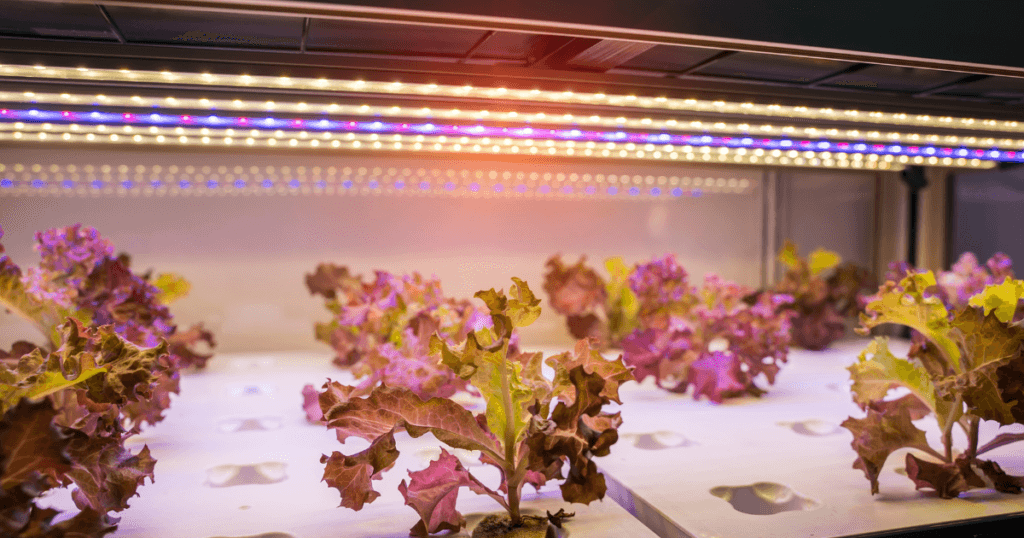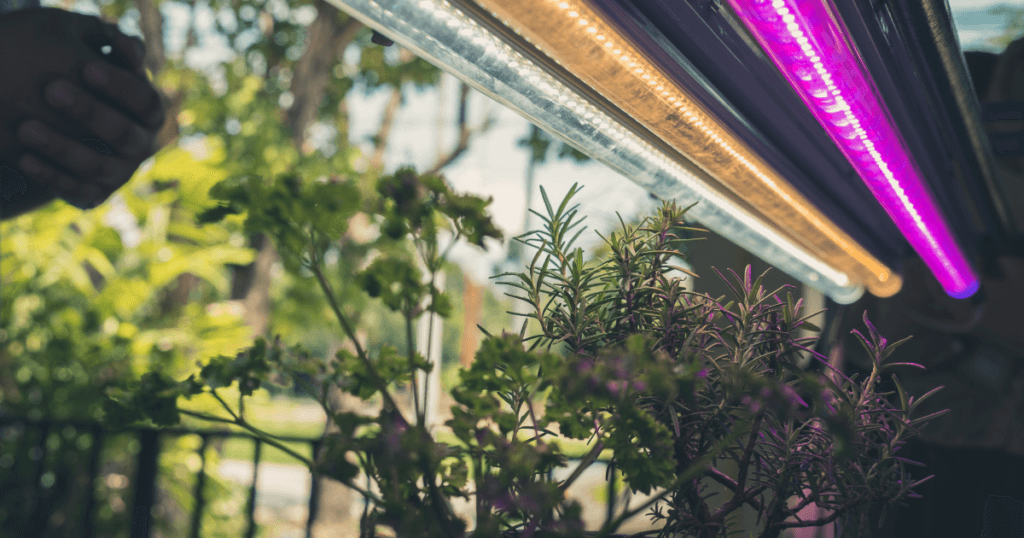Maximizing your Crop Yields with the Right Indoor Farming LED Lights

Regarding indoor farming, the right lighting is crucial for maximizing crop yields. With technological advancements, LED lights have become the go-to choice for indoor farmers worldwide. This article will explore the benefits and considerations of using LED lights for indoor farming. We will delve into the key factors to consider when selecting LED lights, their impact on crop growth, and how to optimize their usage to achieve exceptional yields. By the end, you will have a comprehensive understanding of how to harness the power of indoor farming LED lights to boost your crop production.
Table of Contents
Understanding the Role of LED Lights in Indoor Farming
What are LED Lights?
LED, or Light Emitting Diode, are energy-efficient lighting fixtures that produce light by moving electrons in a semiconductor material. They have gained immense popularity recently due to their long lifespan, low energy consumption, and versatility.
Benefits of LED Lights for Indoor Farming
- Energy EfficiencyThe ratio of useful energy output to the energy input in an ... More: LED lights consume significantly less energy than traditional lighting options, reducing operational costs for indoor farmers.
- Customizable Light SpectrumThe range of wavelengths within the electromagnetic spectrum... More: LED lights can be tailored to emit specific wavelengths of light, allowing farmers to optimize the light spectrumThe range of wavelengths within the electromagnetic spectrum... More for different growth stages of plants.
- Heat Management: LED lights produce minimal heat, reducing the risk of heat damage to plants and enabling them to be placed closer to the crop canopyThe upper layer of foliage formed by the leaves and branches... More.
- Longevity: LED lights have a lifespan of up to 50,000 hours, ensuring long-term cost-effectiveness and minimal replacement needs.
Factors to Consider when Choosing Indoor Farming LED Lights
To maximize your crop yields, it is essential to consider several factors when selecting LED lights for indoor farming.

Light Intensity
The intensity of light directly affects plant growth and yieldThe amount of crop or harvest produced from a given area or ... More. Different crops have varying light intensityThe level of brightness or luminous flux of light reaching a... More requirements at different growth stages. Choosing LED lights that can provide the desired light intensityThe level of brightness or luminous flux of light reaching a... More for optimal photosynthesisThe process by which plants convert light energy into chemic... More and growth is crucial.
Light Spectrum
The light spectrumThe range of wavelengths within the electromagnetic spectrum... More emitted by LED lights plays a vital role in plant growth and development. Different wavelengths influence various physiological processes, such as germinationThe process by which a seed sprouts and develops into a new ... More, flowering, and fruiting. By selecting LED lights with customizable spectra, farmers can tailor the lighting conditions to meet the specific needs of their crops.
Light Uniformity
Uniform light distribution across the entire crop canopyThe upper layer of foliage formed by the leaves and branches... More is essential to ensure consistent growth and minimize variations within the plants. When choosing LED lights, consider their ability to provide uniform light coverage and avoid hotspots or areas with inadequate illumination.
Energy Efficiency
Indoor farming operations consume significant energy, making energy efficiencyThe ratio of useful energy output to the energy input in an ... More a crucial consideration. Opt for LED lights with high energy efficiencyThe ratio of useful energy output to the energy input in an ... More ratings to minimize power consumption while maximizing crop yieldThe amount of crop or harvest produced from a given area or ... More.
Durability and Lifespan
Investing in durable LED lights with a long lifespan is essential to avoid frequent replacements and associated costs. Look for lights with robust construction and reliable components to ensure longevity and optimal performance throughout their lifespan.
Optimizing LED Light Usage for Maximum Crop Yields
Light Duration and Photoperiod
The duration of light exposure and photoperiodThe duration of light and dark periods in a 24-hour cycle. C... More significantly impact plant growth and development. Different crops have specific light duration requirements at different growth stages. By carefully managing the light duration and adjusting the photoperiodThe duration of light and dark periods in a 24-hour cycle. C... More, farmers can optimize crop yields.
Light Distance and Canopy Penetration
The distance between the LED lights and the crop canopyThe upper layer of foliage formed by the leaves and branches... More is crucial in achieving optimal light distribution and canopyThe upper layer of foliage formed by the leaves and branches... More penetration. Positioning the lights at an appropriate length is essential to ensure uniform light coverage and promote photosynthesisThe process by which plants convert light energy into chemic... More in all parts of the plant.
Lighting Schedule and Automation
Maintaining a consistent lighting schedule is essential for plant health and growth. Consider using automated systems that allow you to program and control the lighting schedule. This ensures the plants receive the required light at the right time, even if you are not physically present.
Supplemental Lighting
In some cases, natural light may not be sufficient for optimal plant growth, especially in regions with limited sunlight or during the winter months. Supplemental lightingAdditional artificial lighting used in indoor farming to sup... More with LED lights can bridge this gap and provide the additional light needed to maximize crop yields.
Light Management and Control Systems
Investing in advanced light management and control systems can enhance the efficiency and effectiveness of LED lighting in indoor farming. These systems allow you to monitor and adjust light intensityThe level of brightness or luminous flux of light reaching a... More, spectrum, and duration according to the specific needs of your crops. They precisely control lighting parameters, ensuring consistent and optimized growth conditions.
Considerations for Different Crop Types
Different crops have unique lighting requirements. Some crops, such as leafy greens and herbs, thrive under higher light intensities, while others, like flowering plants, may require specific light spectra. Understanding the lighting preferences of your particular crops is essential to select the most suitable LED lights for maximum yieldThe amount of crop or harvest produced from a given area or ... More.
Conclusion
Selecting the right LED lights for indoor farming is a critical step towards maximizing crop yields. By considering light intensityThe level of brightness or luminous flux of light reaching a... More, spectrum, uniformity, energy efficiencyThe ratio of useful energy output to the energy input in an ... More, and lifespan, you can make informed choices that will benefit your plants and your bottom line. Optimizing LED light usage through proper light duration, distance, scheduling, and control systems further enhances the growth and productivity of your crops. With the right combination of LED lights and smart lighting management, you can achieve exceptional results in your indoor farming endeavours.
Remember, when it comes to indoor farming, the right LED lights are not just a source of illumination; they are the key to unlocking the full potential of your crops.
FAQs – Indoor Farming LED Lights
Useful Resources on Indoor Farming LED Lights
- https://www.purdue.edu/newsroom/releases/2023/Q1/new-led-strategies-could-make-vertical-farming-more-productive,-less-costly.html
- https://www.washingtonpost.com/graphics/2018/lifestyle/led-growing/
- https://www.freshfruitportal.com/news/2022/05/05/five-things-indoor-farmers-should-know-when-choosing-their-grow-lights/
- https://www.ge.com/news/reports/how-led-is-lighting-the-way-toward-indoor-farming
- https://www.liveabout.com/grow-light-options-for-indoor-and-vertical-farming-4147429